THE Mitsubishi Pajero Evolution it is perhaps one of the most obscure homologation specials ever made, far removed from the fame achieved by the rest of the Evolution who attacked and dominated the WRC qualifiers — whether on tarmac, gravel or snow.
Although. it's not because of the lack of visibility that Pajero Evolution sees its credentials pinched.
Like the Evolution we know, born from the modest Lancer, and transformed into an overwhelming weapon both in competition and on the road, Pajero Evolution also started out humble.
the king of the dakar
The Mitsubishi Pajero is the undisputed King of the Dakar, accumulating 12 total victories , many more than any other vehicle. Of course, if you look at all the Pajero that have won over the years, not those that were clearly derived from the production model stand out, but the prototypes, the true prototypes that the “original” Pajero kept only in name.
It was the end of these T3 class prototypes in 1996 by Mitsubishi, Citroën and (previously) Peugeot — excessively fast according to organizers — that opened the door to the Pajero Evolution. Thus, in 1997, the T2 class, for models derived from production cars, rose to the main category of the Dakar.
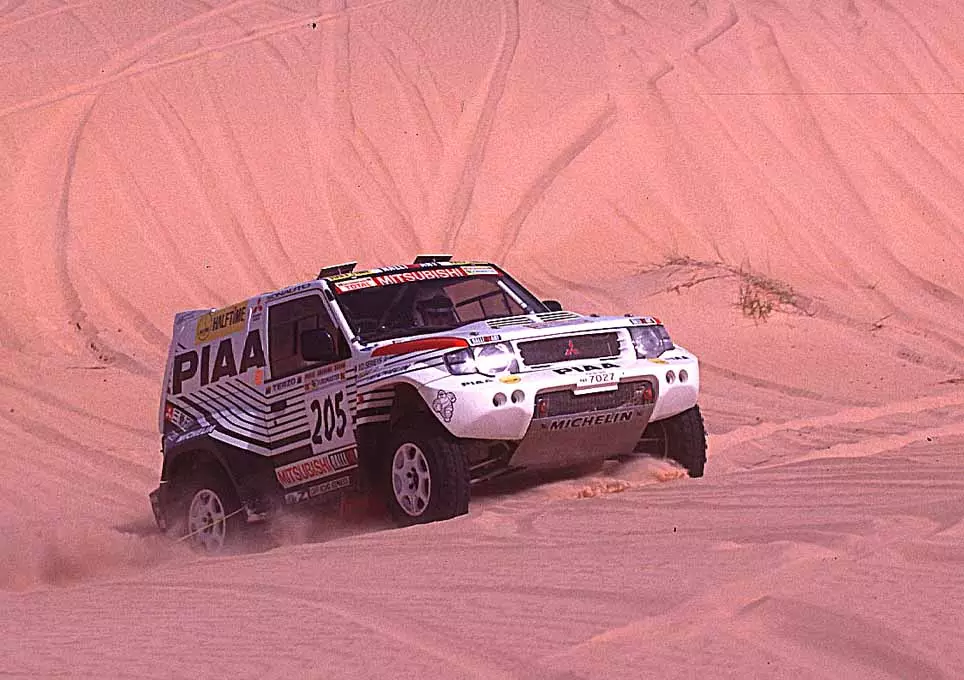
And this year, the Mitsubishi Pajero simply crushed the competition — finished in the first four places, with the victory smiling to Kenjiro Shinozuka. No other car had the pace the Pajeros demonstrated. Note that the 5th place, the first non-Mitsubishi in the table, the Schlesser-SEAT two-wheel drive buggy with Jutta Kleinschmidt at the wheel, was more than four hours away from the winner. The first non-Mitsubishi T2, a Nissan Patrol driven by Salvador Servià, was over five hours away!
The difference in pace was abysmal. How is it justified?
The “creative” side of Mitsubishi
We've seen this happen over and over again. Gaining a competitive edge through creative interpretation of regulations has been part of motorsport history since its inception.Mitsubishi was playing by the rules — the Pajero in competition was still a T2 class, derived from a production model. The question was precisely in the production model from which it was derived. Yes, it was a Pajero, but a Pajero like no other. Essentially, Mitsubishi ended up developing a… super-Pajero — not unlike turning a Lancer into an Evolution — I produced it in the numbers required by the regulations, and voila! — ready to attack the Dakar. Great, isn't it?
The mission
The task was far from easy. The engineers of the competition department of the three diamond brand spared no effort to transform the Pajero into a “lethal weapon” capable of conquering a rally as hard and fast as the Dakar.
Subscribe to our newsletter
If you're familiar with the Pajero at the time — code V20, second generation — there were “dunes” of differences for Evolution. On the outside there was a much heavier look, but it was what was hidden underneath that really set him apart from all the other Pajero.
The regular Pajero was an all-terrain and was equipped for it — spar and crossmember chassis and the beautiful rigid rear axle for the most daring axle crossings were present. The novelty in this second generation was the introduction of the innovative Super Select 4WD system that combined the advantages of having partial or permanent four-wheel drive, with several modes to choose from.
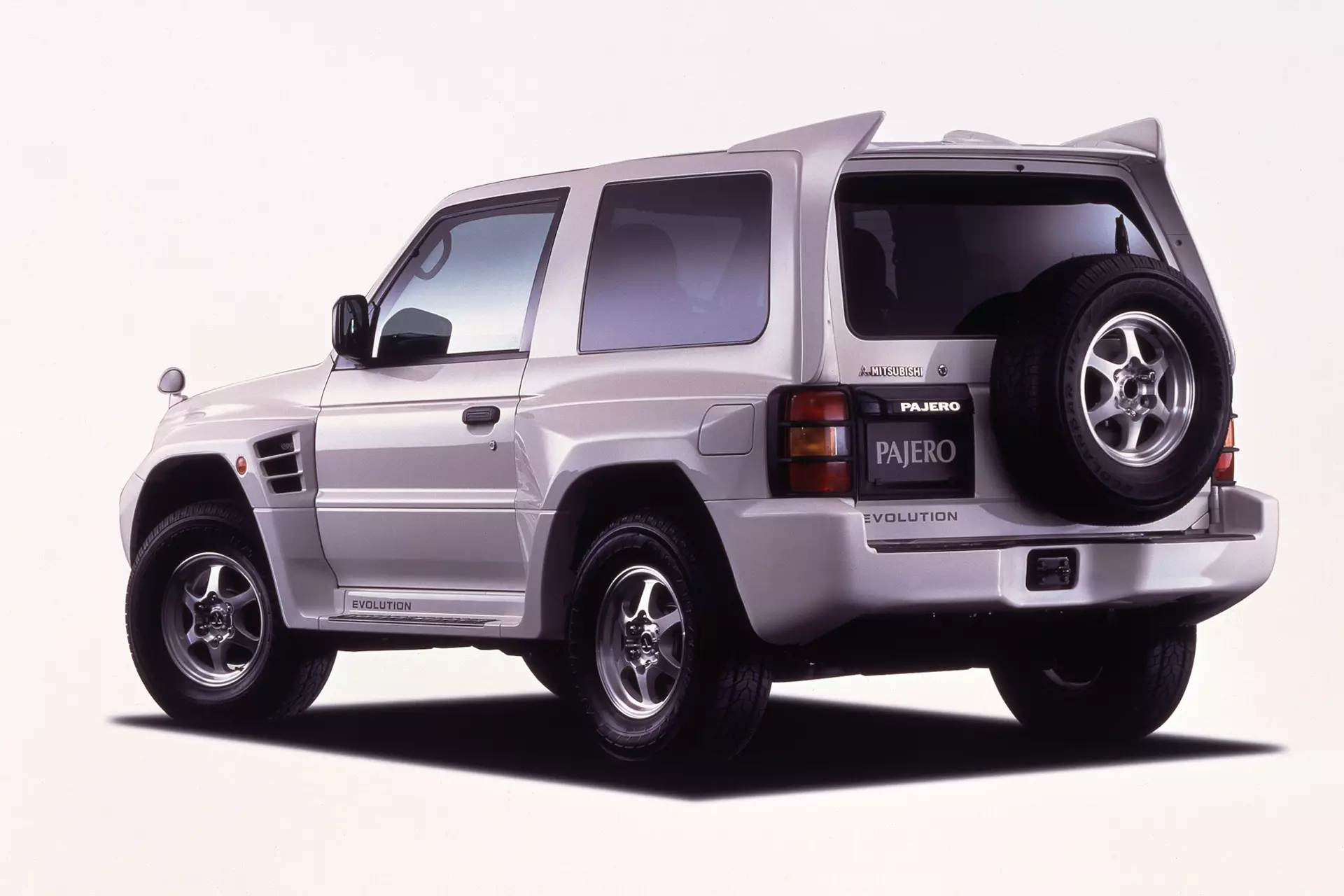
More Revolution than Evolution
Engineers kept the Super Select 4WD system, but most of the chassis was simply thrown away. In its place came the curiously named ARMIE — All Road Multi-link Independent suspension for the Evolution —, that is, the first Mitsubishi Pajero with independent suspension on both axles was born . The suspension scheme was made up of double overlapping triangles at the front and a multilink scheme at the rear, all suspended by specific shock absorbers and springs. Specs more worthy of a true sports car than an off-road.
But the changes did not stop there. Torsen self-locking differentials were applied at the front and rear, keeping the Pajero's center differential regular, and the tracks were widened — no less — 125 mm at the front and 110 mm at the rear. To better adapt to the numerous jumps characteristic of the Dakar, the suspension travel was also increased to 240 mm at the front and 270 mm at the rear.
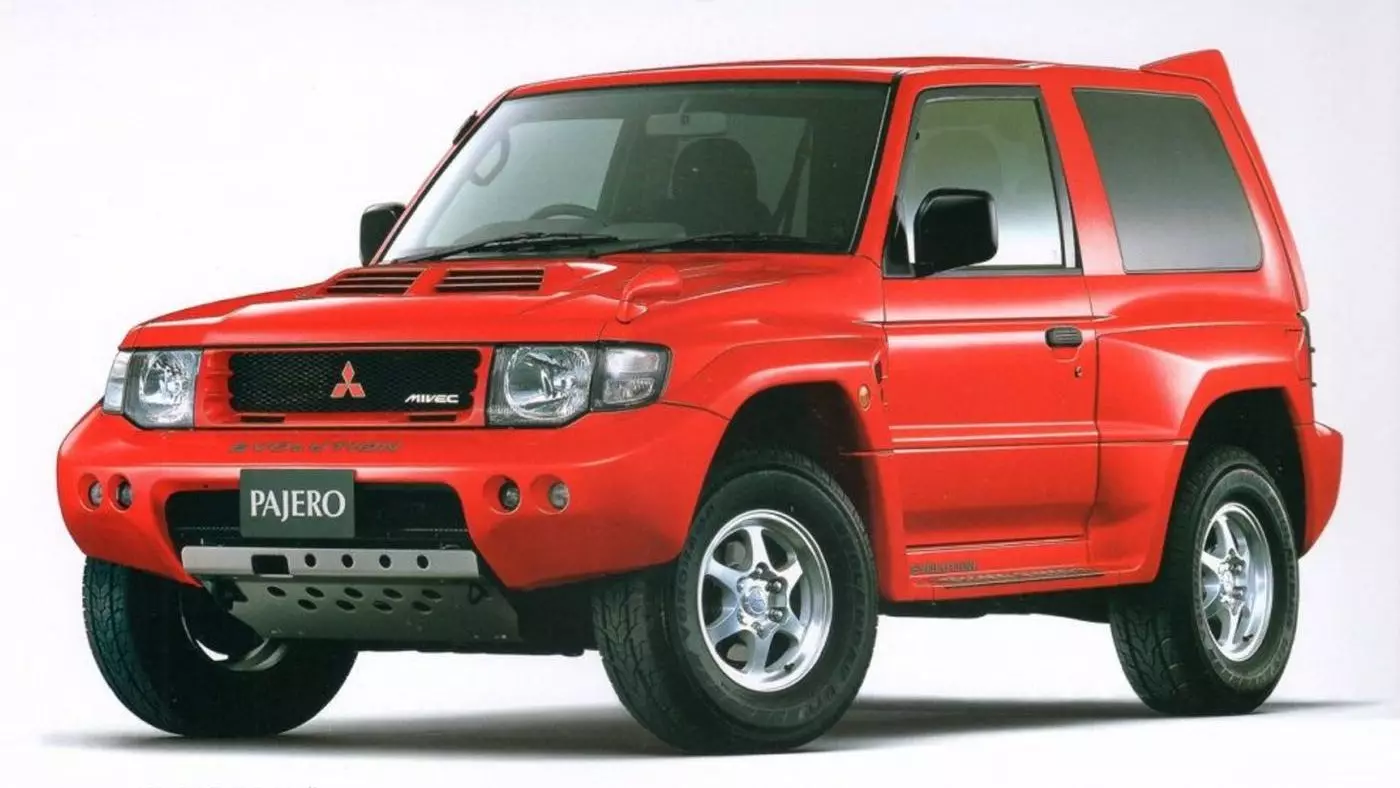
Only three colors available — red, gray and white, the most chosen color
They didn't stay for the chassis
The extravagance continued abroad — the Pajero Evolution featured an aerodynamic kit capable of intimidating any (Lancer) Evolution. The transformation would be completed with an aluminum ventilated hood and it was even possible to have huge fenders; and with wheels that are much more generous, measuring 265/70 R16. It's the closest thing to an all terrain with Group B aspirations — short and wide, with the only difference being its generous height.
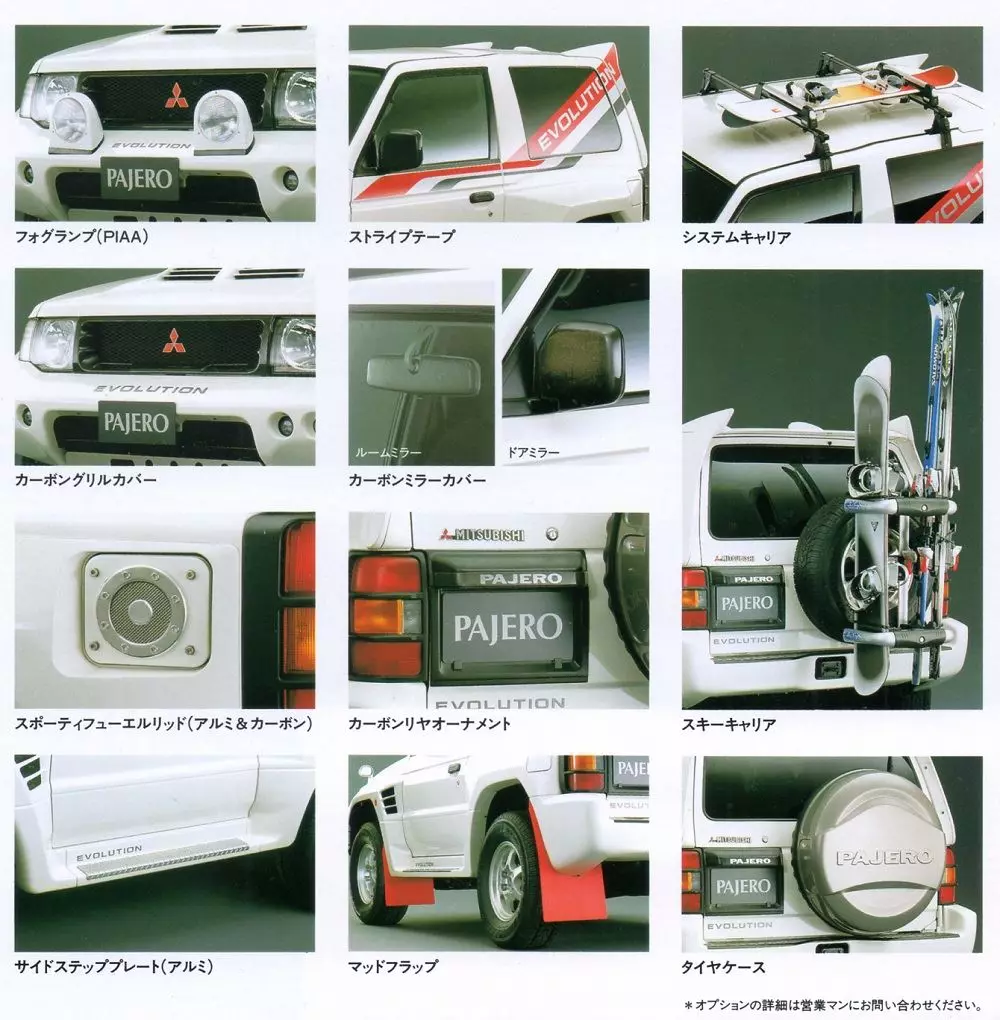
And the engine?
Under the hood we found the more powerful variant of the 6G74, a naturally aspirated V6 with a capacity of 3.5 l, 24 valves and two overhead camshafts. Unlike other Pajero's, Evolution's V6 added the MIVEC system — so to speak, with variable valve opening — with power at 280 hp and torque at 348 Nm . It was possible to choose between two transmissions, manual and automatic, both with five speeds.
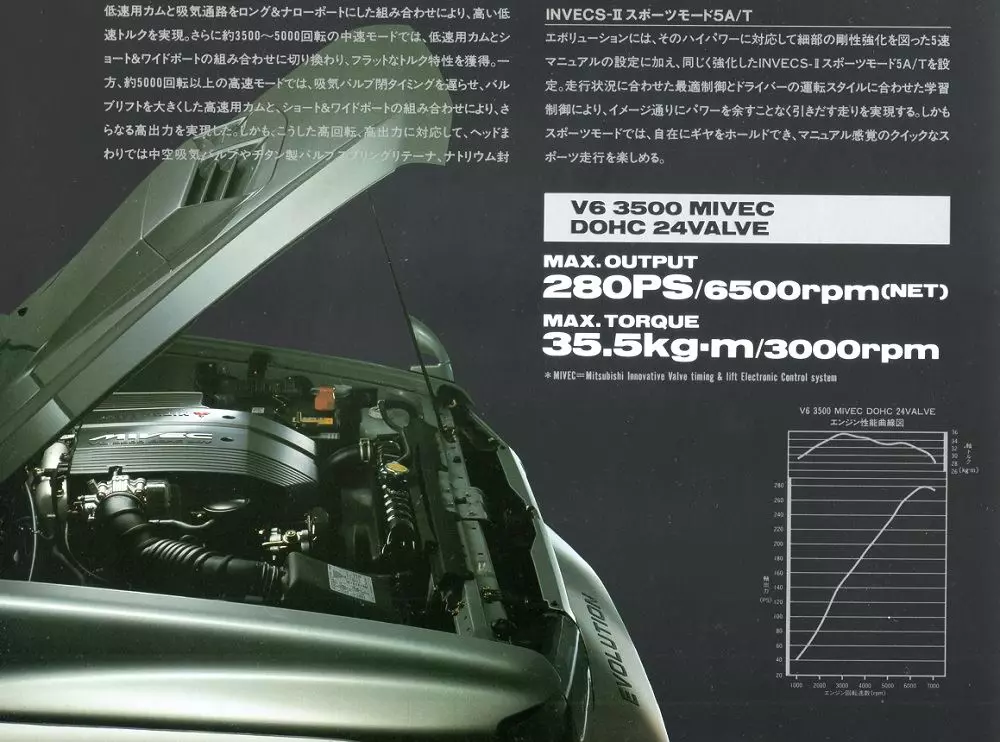
A number that reflects the time of the “gentlemen's agreement” among Japanese builders that limited the power of their engines to 280 hp — some reports indicate that there were “hidden horses” in the engine of the Pajero Evolution. However, the official 280 hp already represented a gain of 60 hp compared to the other Pajero V6. Installments? We don't know, even because the brand has never officially released them.
It is the owners of this unusual machine who report times in the range of 8.0-8.5 seconds up to 100 km/h and the top speed is close to 210 km/h. Not bad considering the mass skimming the two tons.
According to some reports, the perception is that it has a road pace similar to some hot hatches, with the advantage that it can maintain this pace regardless of the road surface — asphalt, gravel or even snow(!). And it's the owners who also point out the automatic transmission as the best choice, due to its superior robustness — the same one that equipped the Pajero Evolution on the Dakar.
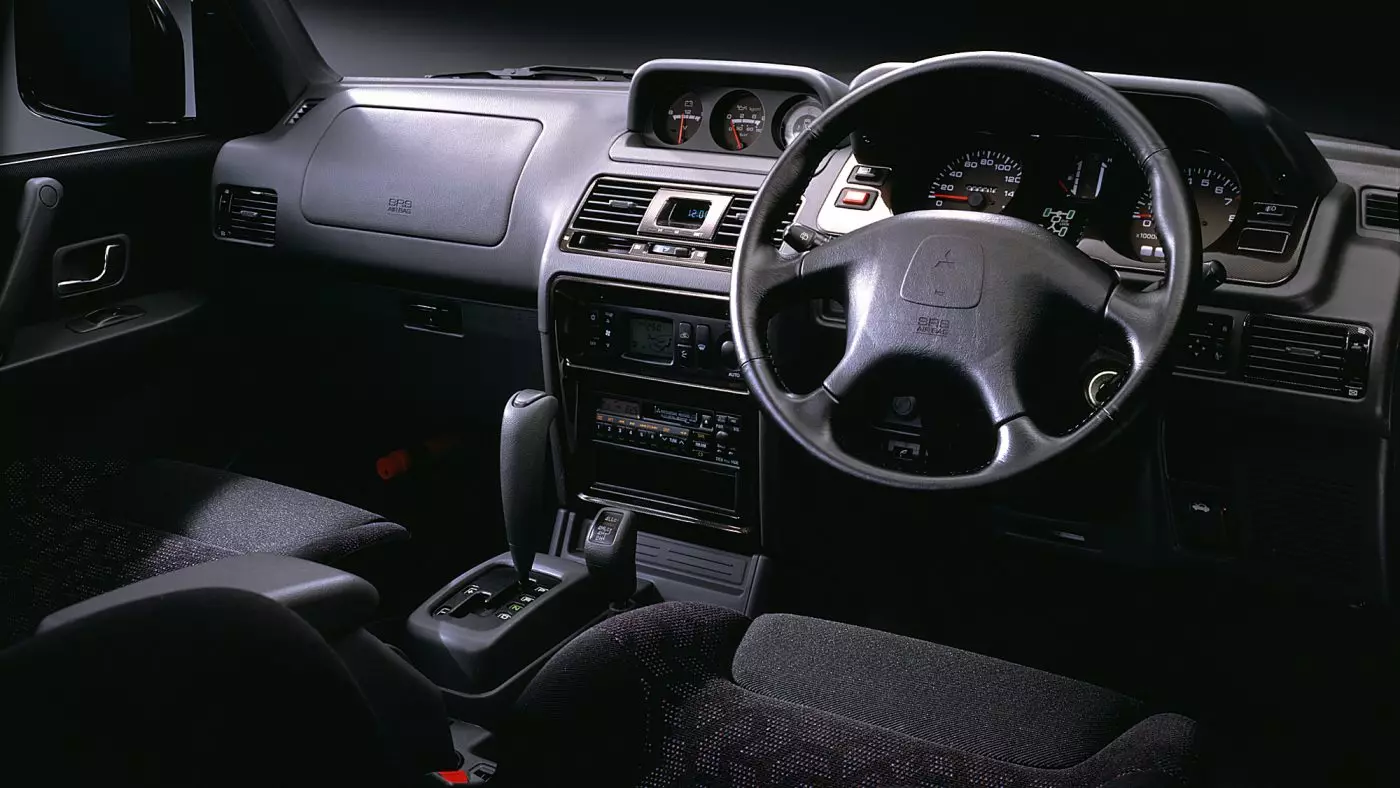
The ATM, the one chosen for the Dakar
ready for the dakar
Nothing has been left to chance. The Mitsubishi Pajero Evolution (codename V55W) was ready, not to take on the streets, but to take on the Dakar. 2500 units were produced (between 1997 and 1999), as required by regulations. The Pajero Evolution thus circumvented the limited rules of the T2 class, giving it a colossal advantage over other competitors.
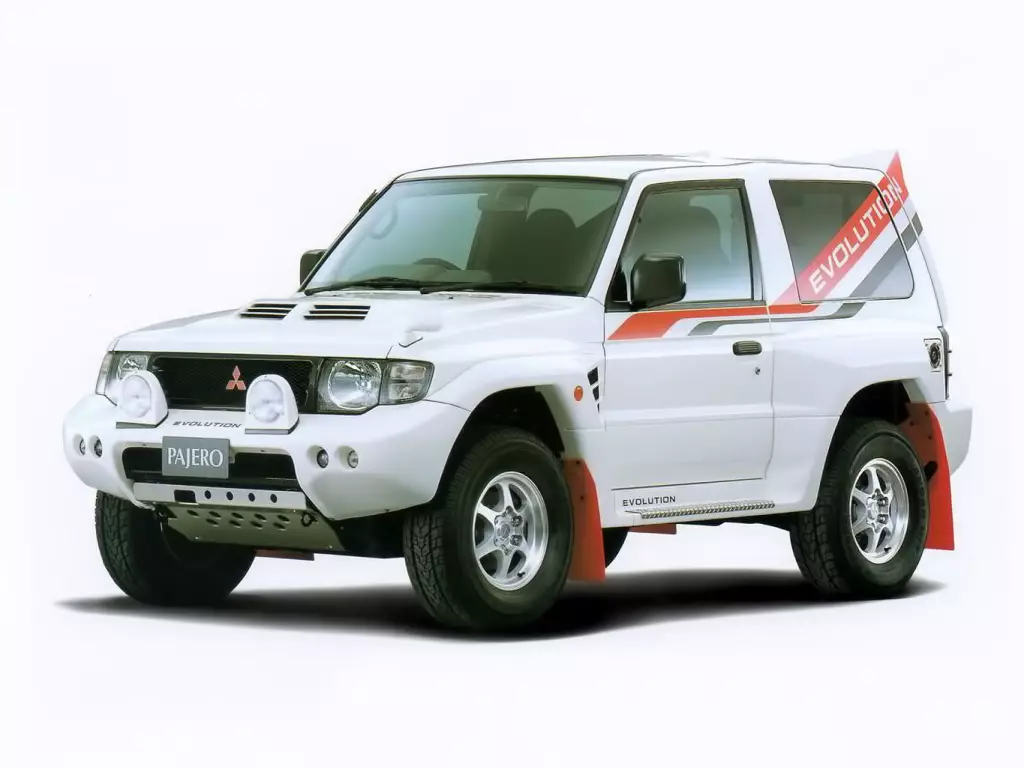
It was the dominant force on the Dakar in 1997, as we've already mentioned, and would repeat the feat in 1998, taking the top four again, leaving the competition even further behind — the first non-Mitsubishi would be more than eight hours away from the winner, this time, Jean-Pierre Fontenay.
This homologation special, unlike others, perhaps due to its nature, ended up being forgotten. In such a way that, despite moving quickly towards classic and being a genuine homologation special, with a limited number of units, they continue to be absurdly cheap — in the United Kingdom, prices range between 10 thousand and 15 thousand euros. More expensive are some of its rare accessories — the fenders, mentioned above, can amount to almost 700 euros (!).
The Mitsubishi Pajero Evolution was not the first and will not be the last example of a road car that was born solely and only with the purpose of gaining an advantage in the competition. The most recent and explicit case? The Ford GT.
